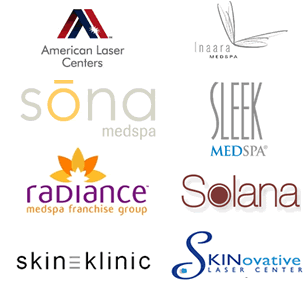Plastic Surgery & Cosmetic Surgery Trends For 2008
/ The ASAPS (American Society for Aesthetic Plastic Surgery) reports 10.2 Million Cosmetic Procedures in 2008. The Aesthetic Society, after collecting multi-specialty procedural statistics since 1997, says the overall number of cosmetic procedures has increased 162 percent since the collection of the statistics first began. The most frequently performed nonsurgical procedure was Botox injections and the most popular cosmetic surgical procedure was breast augmentation.
The ASAPS (American Society for Aesthetic Plastic Surgery) reports 10.2 Million Cosmetic Procedures in 2008. The Aesthetic Society, after collecting multi-specialty procedural statistics since 1997, says the overall number of cosmetic procedures has increased 162 percent since the collection of the statistics first began. The most frequently performed nonsurgical procedure was Botox injections and the most popular cosmetic surgical procedure was breast augmentation.
Top nonsurgical cosmetic procedures among men and women in 2008:
Botox - 2,464,123
Laser Hair Removal - 1,280,964
Hyaluronic Acid (including Hylaform, Juvederm, Perlane/Restylane) - 1,262,848
Chemical Peel - 591,808
Laser Skin Resurfacing - 570,880
Top surgical cosmetic procedures among men and women in 2008:
Breast Augmentation: - 355,671
Lipoplasty (liposuction) - 341,144
Eyelid Surgery - 195,104
Rhinoplasty - 152,434
Abdominoplasty - 147,392
source: ASAPS press release
“For the first time in the twelve years these statistics have been collected liposuction is a runner up in popularity to breast augmentation. There is no doubt that this turnabout will generate discussions in the medical community and the public at large,” Alan Gold, MD, Aesthetic Society president, reflects that “changes in fashion, i.e. décolletage baring styles, might be a factor behind this change.” Racial and ethnic minorities accounted for 20 percent of all cosmetic procedures in 2008. Hispanics again led minority racial and ethnic groups in the number of procedures: Hispanics, 8 percent; African-Americans, 6 percent; Asians, 4 percent; and other non-Caucasians, 2 percent. Location and Fees
Top surgical and nonsurgical cosmetic procedures among men and women in 2008:
Surgical
# procedures
Nonsurgical
# procedures
Breast Augmentation:
355,671
Botox
2,464,123
Lipoplasty (liposuction)
341,144
Laser Hair Removal
1,280,964
Eyelid Surgery
195,104
Hyaluronic Acid
(including Hylaform, Juvederm, Perlane/Restylane)1,262,848
Rhinoplasty
152,434
Chemical Peel
591,808
Abdominoplasty
147,392
Laser Skin Resurfacing
570,880
Top cosmetic procedures for WOMEN:
Surgical
# procedures
Nonsurgical
# procedures
Breast augmentation
355,671
Botox
2,239,024
Lipoplasty
309,692
Hyaluronic Acid
(including Hylaform, Juvederm, Perlane/Restylane)1,200,420
Eyelid surgery
166,426
Laser Hair Removal
1,101,255
Abdominoplasty
143,005
Chemical Peel
554,492
Breast Reduction
139,926
Laser Skin Resurfacing
532,008
____________________________________________________________________________________________________
Women had almost 92 percent of cosmetic procedures. The number of procedures (surgical and nonsurgical) performed on women was over 9.3 million, a decrease of over 11 percent from the previous year. Surgical procedures decreased 15 percent; nonsurgical procedures decreased by 11 percent. Since 1997, surgical procedures increased 104 percent, while nonsurgical procedures have increased 233 percent.
Top cosmetic procedures for MEN:
Surgical
# procedures
Nonsurgical
# procedures
Liposuction
31,453
Botox injection
225,099
Rhinoplasty
30,174
Laser hair removal
179,708
Eyelid Surgery
28,678
Hyaluronic Acid
(including Hylaform, Juvederm, Perlane/Restylane)62,428
Gynecomastia
19,124
IPL laser treatment
46,887
Hair transplantation
18,062
Microdermabrasion
39,824
____________________________________________________________________________________________________
Men had over 8 percent of cosmetic procedures. The number of procedures (surgical and nonsurgical) performed on men was over 800,000 a decrease of over 21 percent from the previous year. Surgical procedures decreased 18 percent; nonsurgical procedures decreased 22 percent. Since 1997, surgical procedures have decreased over 15 percent while nonsurgical procedures have increased 239 percent.
Frequency of cosmetic procedures by AGE GROUP:
% of total
Age
# procedures
Top surgical procedure
Top nonsurgical procedure
45%
35-50
4.6 million
Liposuction
Botox
26%
51-64
2.7 million
Eyelid Surgery
Botox
22%
19-34
2.2 million
Breast augmentation
Laser Hair Removal
6%
65 and over
634,667
Eyelid Surgery
Botox
2%
18 and under
160,283
Rhinoplasty
Laser Hair Removal
Racial and Ethnic Distribution
Over fifty-three percent (53 percent) of cosmetic procedures in 2008 were performed in office-based facilities; 26 percent in freestanding surgicenters; and 19 percent in hospitals. Americans spent just under $12 billion on cosmetic procedures; $7.2 billion was for surgical procedures, and $4.6 billion was for nonsurgical procedures.













